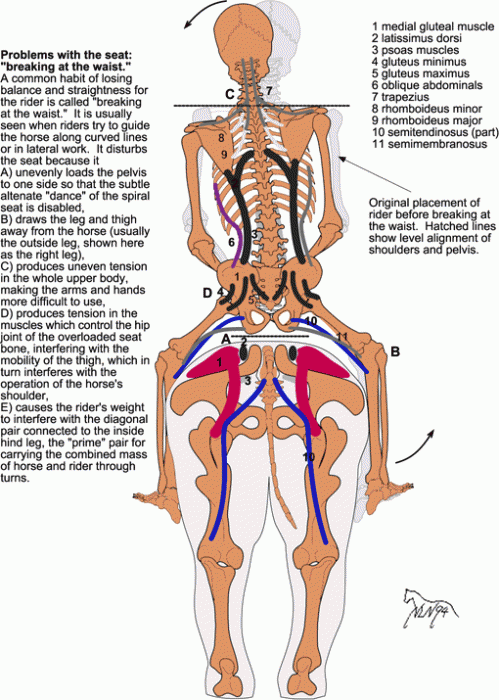
Effect of physiotherapy to postural control of horse riders
Previous studies describe natural asymmetry in humans and riders in general and a common right-side bias in asymmetry. The pelvis is the base for postural control. Instability of this region increases unwanted movement of the lower trunk. This preliminary study of riders suggests that physiotherapy to the pelvic region may improve seated postural stability and reduce asymmetry in pressure distribution.
During this study 6 riders were assessed in a seated position on a force plate with arms folded across the chest, looking straight ahead and keeping the legs still and of the ground. Secondly, participants were measured while sitting on a static saddle horse in their typical riding posture. Three riders received physiotherapy and the rest was assigned to the control group.
The physiotherapeutic intervention involved limb rotation and massage and was focused on the muscles connecting to the pelvis. The intervention was fitted to each rider’s functional needs and focused on improving asymmetry and motor control, related to horse riding.
There was a significant difference between the intervention- and control group. The treatment group showed a reduction in postural instability. These initial findings require further research to examine the effect of physiotherapy in the moving horse.
Back pain is often reported in riders and horses, and asymmetry could be a causal factor if other factors cannot be identified. Both physiotherapy and specific core training for riders may play a significant role in improving horse and rider health.
> C.M. Nevison, M.A. Timmis / Journal of Veterinary Behavior 8 (2013) 261–264. All rights reserved to Elsevier Inc. Click here for the ScienceDirect summary
This video shows a new physiotherapeutic intervention to create awareness of the rider’s seat by myofeedback. The flexchair was initially used for patients with lower back pain.


